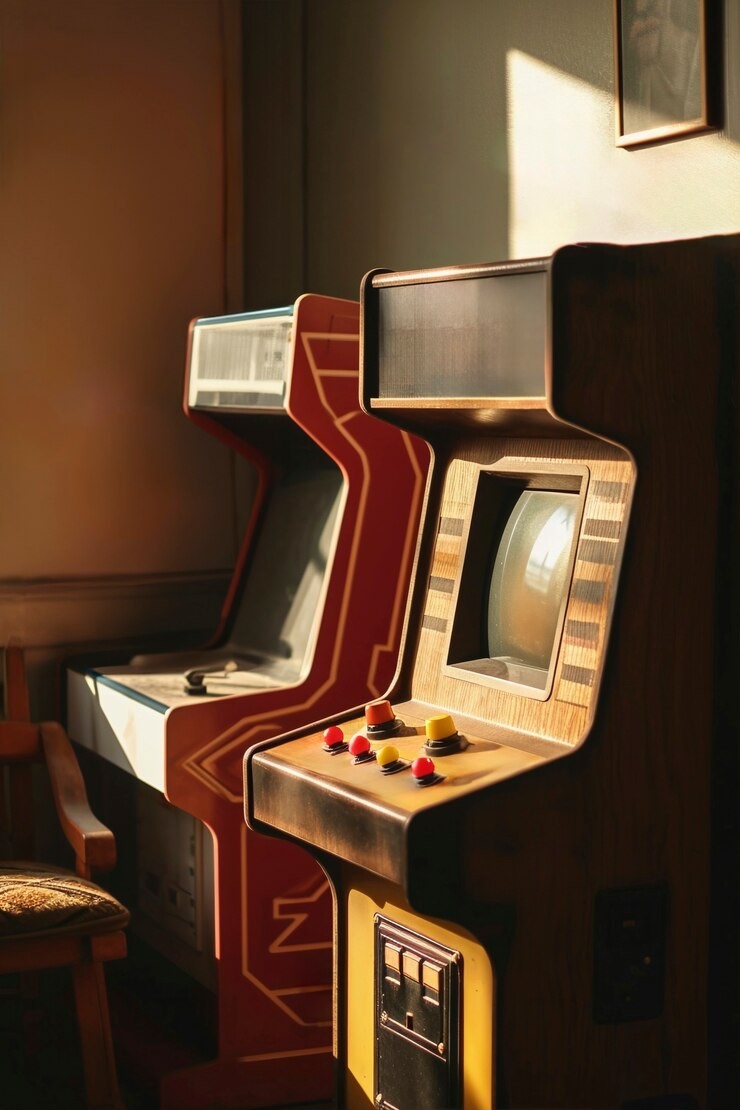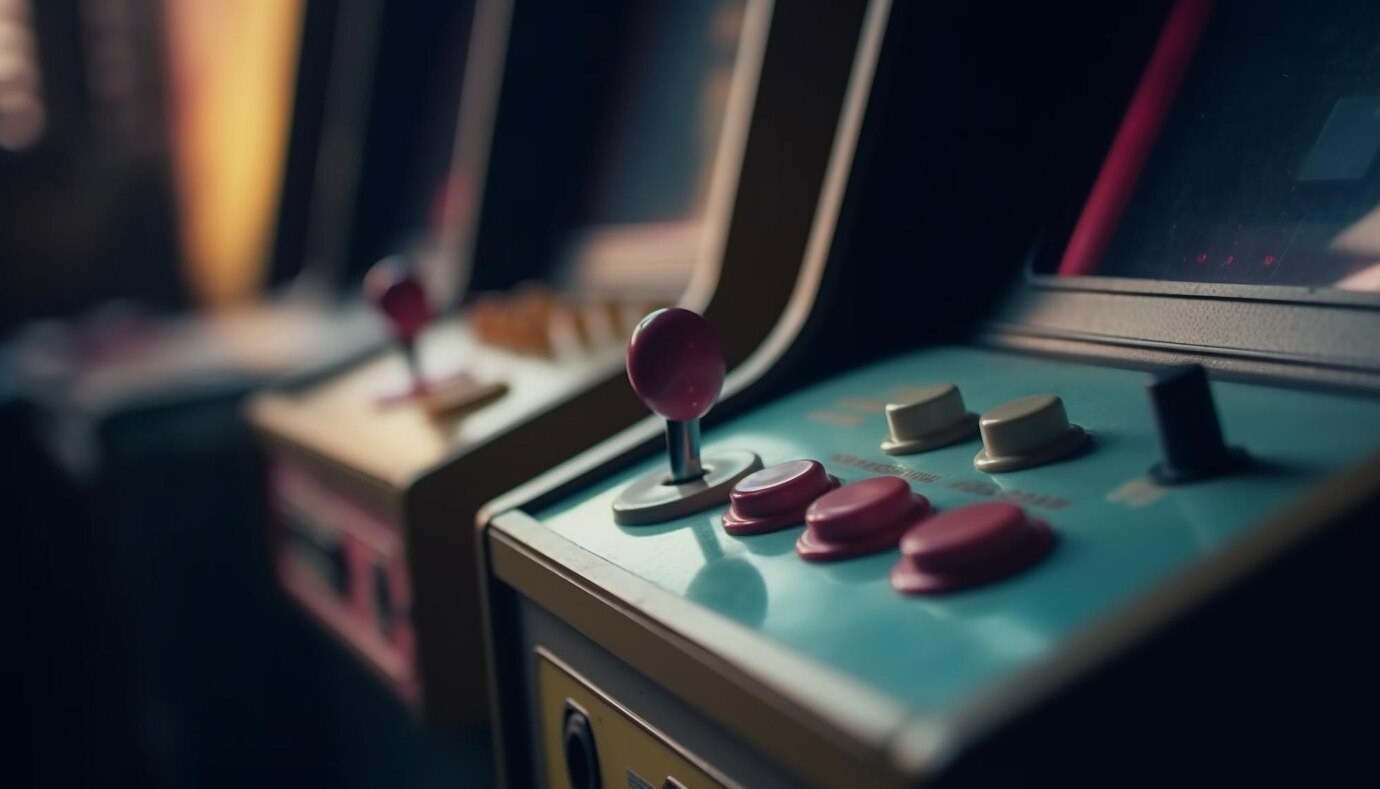Retro gaming machines have transcended their original purpose of entertainment to become cultural icons that evoke nostalgia, inspire art, and influence modern design. These machines, once staples of arcades and betting halls, now serve as emblems of a bygone era—one that continues to shape contemporary aesthetics and cultural expressions.
A Nostalgic Journey Through Time
The allure of retro gaming machines lies in their ability to evoke a sense of nostalgia among people of all ages. With their distinct pixelated graphics, distinctive sound effects, and tactile buttons, these machines remind us of simpler times when the thrill of a coin drop could spark boundless joy. They stand as monuments to an era where technology was emerging and the idea of digital entertainment was still in its infancy.
This nostalgia is not just about fond memories; it is about celebrating the ingenuity of early game design and recognising its role in shaping the current gaming industry. Over time, classic arcade games and slot machines have influenced not only video games but also broader cultural trends. Their bold, unpretentious aesthetic and the promise of instant reward captured the public imagination, leaving a legacy that blends seamlessly with the ethos.
The Cultural Influence Beyond Entertainment
Retro gaming machines have impacted much more than just the world of entertainment. Their influence is visible in art, design, fashion, and even in the way modern spaces are curated to evoke a sense of vintage coolness. Artists and designers draw inspiration from the vibrant colours, geometric shapes, and distinctive typography found on these machines. Today, we see echoes of their aesthetic in everything from mural art and graphic design to the decoration of trendy cafés and boutiques.
Key Elements in Retro Aesthetics:
- Vibrant Colour Palettes: The bold and often neon colour schemes of arcade cabinets have found their way into modern design.
- Geometric Shapes: Crisp lines and angular designs mirror the digital graphics of early video games.
- Pixel Art Influence: The blocky, pixelated art style remains a popular aesthetic in contemporary visual arts.
These elements are not just relics of the past; they form a bridge between traditional design and modern creative expression. They challenge today’s artists to reinvent classic styles, much like the way vintage gaming machines redefined entertainment during their peak.
Bridging Classic and Contemporary Trends
Modern culture thrives on the juxtaposition of old and new. Retro gaming machines exemplify this interplay perfectly. On one hand, they are cherished relics that serve as windows into a past filled with optimism and the pioneering spirit of early digital innovation. On the other hand, they provide a foundation for contemporary trends that celebrate uniqueness and individualism.
This blending of eras is evident in today’s pop culture. Contemporary artists often incorporate elements of retro gaming into their work, transforming these nostalgic icons into symbols of avant-garde creativity. In modern interior design, for example, a vintage arcade machine might serve as both a functional piece of art and a conversation starter in a space that pays homage to mid-20th-century aesthetics.
In an era where the digital and physical worlds increasingly overlap, the simplicity and charm of retro gaming machines offer a counterpoint to the hyper-connected, often overwhelming modern landscape. For those seeking a touch of nostalgia paired with innovative design, exploring the avenues of retro gaming can be both refreshing and inspiring. In fact, enthusiasts looking to dive deeper into the world of vintage gaming bonuses can check out exclusive offers like those found at https://casinosdeargentina.com/bonos/sin-deposito/, where the spirit of retro excitement meets modern reward systems.
Retro Gaming and the Revival of Vintage Cool

The revival of retro gaming is not simply a trend—it is a cultural movement. The aesthetic qualities of these machines have been revived and reinterpreted in various modern mediums. Collectors and enthusiasts scour flea markets, online auctions, and retro-themed expos to seek out original machines, while designers and marketers incorporate their visual elements into branding and product design.
This resurgence is also evident in digital mediums. Video game developers and filmmakers pay homage to retro gaming by integrating pixel art and vintage soundtracks into modern narratives. The cultural footprint of these machines is broad and multifaceted, spanning from analogue arcade halls to today’s digital landscapes. They remind us that innovation is cyclic: what was once cutting-edge can become a timeless source of inspiration.
The Enduring Appeal of the Roll of the Dice
The metaphor of “rolling the dice” is particularly apt when discussing retro gaming machines. Each play offers a chance—an unpredictable mix of skill and luck, reminiscent of life’s own uncertainties. This element of chance and the thrill of anticipation mirror the human experience, making these machines powerful symbols of risk, reward, and creative possibility.
Retro gaming machines, through their distinctive design and functionality, encapsulate the magic of taking a risk. They invite users to engage with the unknown while delivering a burst of nostalgic excitement. The tactile experience of pressing buttons, the clatter of arcade sounds, and the visual spectacle of flashing lights create a multisensory journey that continues to captivate audiences today.
Conclusion
The cultural impact of retro gaming machines extends far beyond their original purpose as instruments of entertainment. They are vibrant relics of a past era that continue to inspire modern design, art, and pop culture. From the glittering glamour of Hollywood retrospectives to the innovative reinterpretations found in contemporary creative spaces, these machines serve as a bridge linking the past with the present.
Their legacy is a testament to the enduring allure of nostalgia—the allure that encourages us to take chances, embrace the unexpected, and celebrate the magic of creative innovation. As we continue to explore new frontiers in technology and design, the timeless charm of retro gaming machines remains a constant reminder of the power of history to inform and inspire the future.


